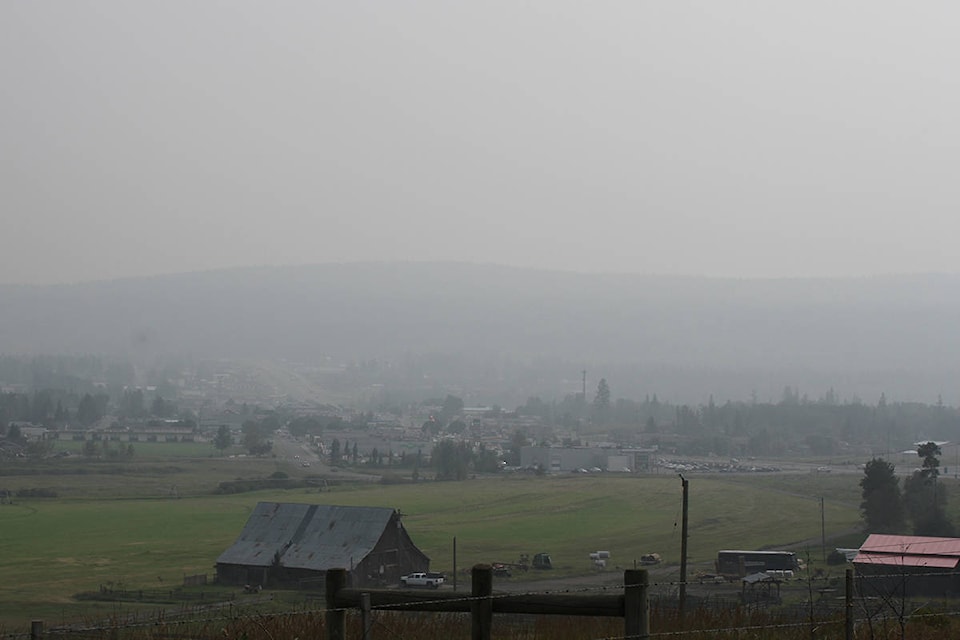Increased wildfire activity in the Cariboo Fire Centre has made for increasingly smoky skies in 100 Mile House.
Barb Liness, a community respiratory therapist at the 100 Mile District General Hospital, knows all too well how wildfire smoke can impact a person’s lungs.
She works with people with respiratory problems, such as Chronic Obstructive Pulmonary Disease (COPD), a disease she said is incurable and progressive.
Liness spoke with the Free Press in May about increased respiratory problems after the 2017 wildfires.
She said things seemed to have settled down a bit since then but now that the smoke is back, “I imagine we will probably see a little bit more issues.”
RELATED: Increased respiratory problems persist after wildfires
Liness said the smoke affects some people more than others. Those particularly vulnerable would include asthmatics or those who already have breathing issues and elderly people.
For people with COPD, she said every time they get sick they “deteriorate a bit more.”
She said they always tell clients to seek help if they experience symptoms from wildfire smoke exposure that last more than two days.
“We want you to deal with it.”
She recommended keeping an eye on the air quality, because: “Even if you can’t smell it, it can still be an issue.”
If you are experiencing symptoms or have concerns with your breathing, you can phone Liness at 250-267-7470.
You can monitor the air quality at bcairquality.ca.
What’s in wildfire smoke?
- A complex mixture of particles and gasses
- Hundreds of chemicals
- Large amounts of fine particulate matter
- Gasses like carbon monoxide, carbon dioxide and nitrogen oxides
- Potentially also sulfur oxides, volatile organic components, hydrocarbons and formaldehyde (depending on materials burned)
(According to Work Safe BC)
Symptoms of wildfire smoke exposure
- Eye, nose and throat irritation
-Headaches
- Shortness of breath
- Coughing or coughing things up
What to do?
- Reduce outdoor activity
- Stay cool and drink plenty of water
- Stay inside if you have trouble breathing
- Find somewhere indoors that’s cool and ventilated
- Use an air conditioner that cools and filters air
- Keep your windows closed
- Consider going to a public place with air conditioning if you do not have it
(according to Environment Canada)
beth.audet@100milefreepress.net
Like us on Facebook and follow us on Twitter.
